In this article, we will discuss the power factor – leading power factor and lagging power factor, and the important differences between the leading power factor and lagging power factor.
What is Power Factor?
As the name implies, the power factor is the factor that gives information about the fraction of total electric power consumed in an electric circuit.
Mathematically, the power factor is defined as the ratio of active or real power to the apparent power, i.e.

The power factor of an electric circuit may also be defined in terms of the angle between the supply voltage and circuit current as follows:

Where ϕ is the phase angle between the supply voltage and circuit current. Thus, the power factor of an electric circuit is the cosine of the phase angle between the supply voltage and current.
Based on the phase angle between the voltage and current in the circuit, the power factor can be of the following three types-
- Unity power factor
- Leading power factor
- Lagging power factor
When the phase angle between voltage and current is equal to 0°, then the power factor of the circuit will be unity. The phasor diagram of voltage and current when the power factor is unity is shown below.
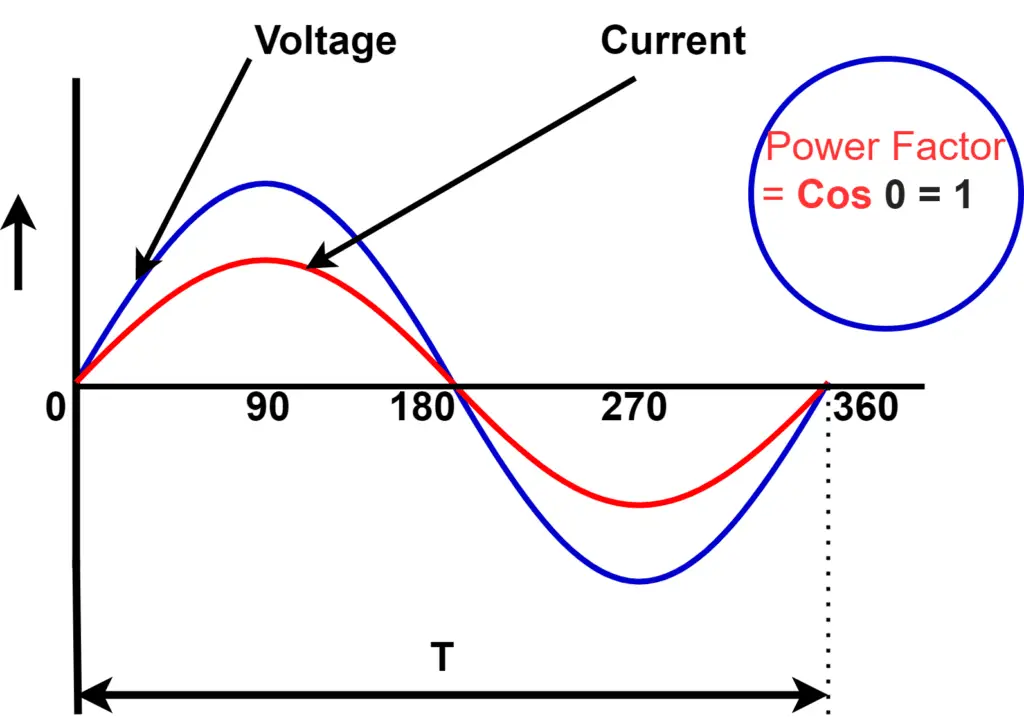

When the phase difference between the voltage and current is such that, the current lags behind the voltage. Then, the power factor of the circuit is called the lagging power factor. On the other hand, when the circuit current is ahead of the supply voltage in terms of phase shift, then the power factor of the circuit is called the leading power factor.
Now, we will discuss the leading power factor and lagging power factor in detail, and the key differences between them.
What is Leading Power Factor?
In some ac electric circuits, the load current is ahead of the supply voltage in phase. Under such conditions, the circuit is said to have a leading power factor. Mostly, such ac circuits that contain capacitors or other reactive power sources have leading power factors. If an electric circuit or system has a leading power factor, then it behaves as a source of reactive power and supplies the reactive power to the rest parts of the circuit.
If the current leads with the supply voltage, then the power factor is leading. The voltage and current phasor is shown in the below figure for the leading power factor.
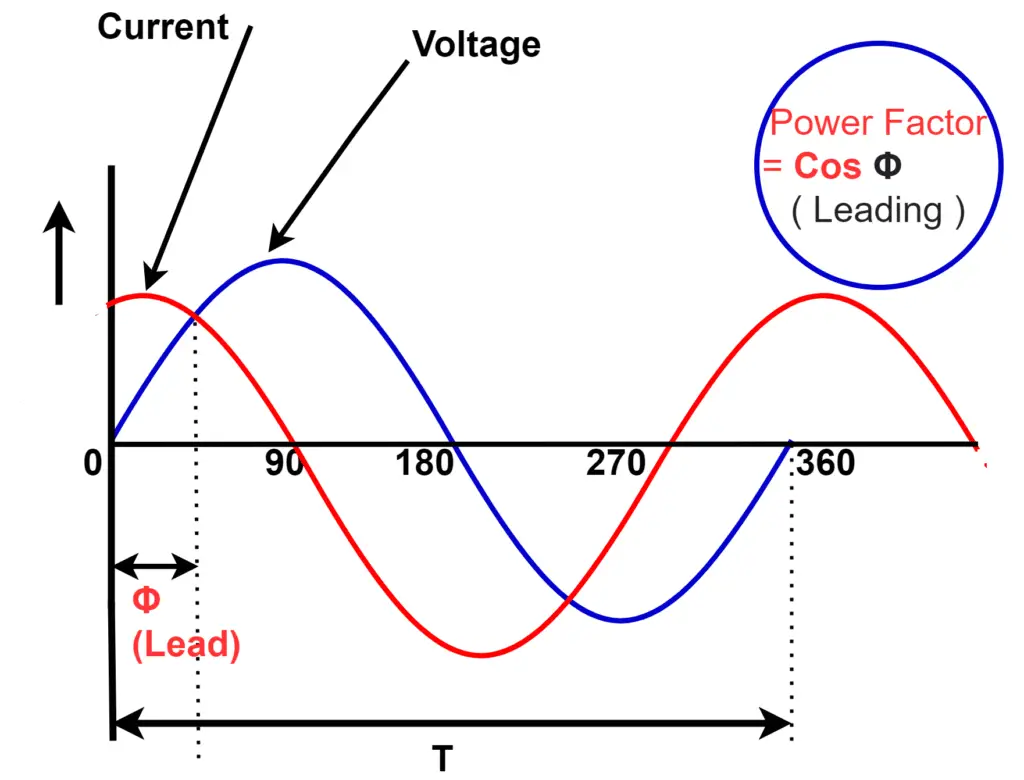
The power triangle and phasor diagram of a load having a leading power factor is shown in figure-1.
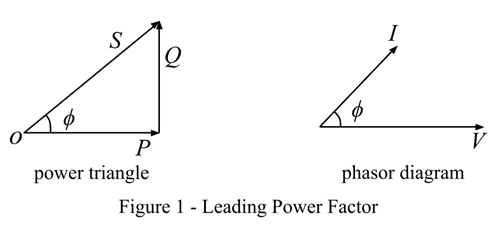
What is Lagging Power Factor?
An ac electric circuit in which the load current lags behind the supply voltage is said to have a lagging power factor. Technically, the lagging power factor means the supply voltage attains its maximum value before the current. Most of the practical electrical circuits and loads have a lagging power factor. The lagging power factor is mainly caused due to inductive effect in the circuit. A circuit having a lagging power factor is considered to consume reactive power. If the current drawn by the circuit lags the supply voltage, then the power factor is lagging.
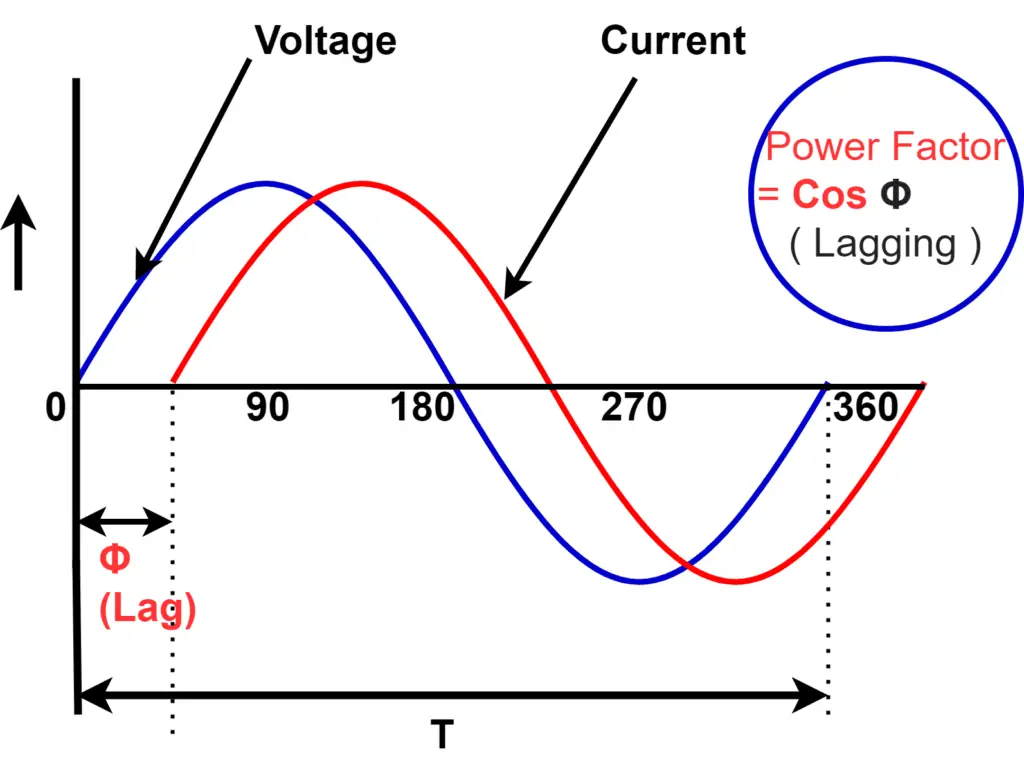
The power triangle and phasor diagram of an electric circuit having a lagging power factor are shown in figure-2.
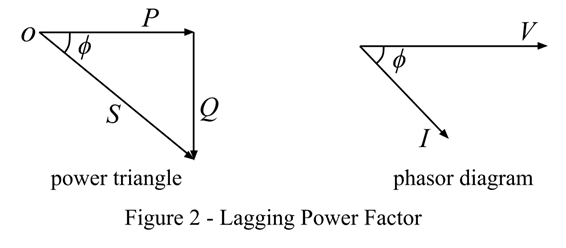
Examples of lagging power factor loads are inductive loads, electric furnaces, and all electric motors.
Key Differences between Leading and Lagging Power Factor
The important differences between the Leading Power Factor and Lagging Power Factor are given in the following table-
| Characteristic | Leading Power Factor | Lagging Power Factor |
| Meaning | When an electric circuit has a load current ahead of the supply voltage in phase, then it is said to have a leading power factor. | When an electric circuit has a load current that remains behind the supply voltage in phase, then the circuit is said to have a lagging power factor. |
| Circuit element | Capacitors cause a leading power factor in the circuit. | Inductors cause lagging power factors in the circuit. |
| Phase angle of current | For the leading power factor, the phase angle of the current is positive with respect to the voltage phasor. | For the lagging power factor, the phase angle of the current is negative with respect to the voltage phasor. |
| Value of power factor | The value of the leading power factor varies from 0 to 1. | The value of the lagging power factor varies from -1 to 0. |
| Reactive power consumption | When a circuit has a leading power factor, it consumes leading reactive power. | When the power factor of the circuit is lagging, then it consumes lagging reactive power. |
| Reactive power delivery | An electric circuit having a leading power factor delivers lagging reactive power. | An electric circuit having lagging reactive power delivers leading reactive power. |
| Polarity of reactive power | For the leading power factor, the reactive power component is taken as negative. | For the lagging power factor, the reactive power component is taken as positive. |
| Power factor improvement | A poor leading power factor can be improved by using an inductive element in the circuit. | A poor lagging power factor can be improved by using a capacitive element in the circuit. |
| Examples of components | Examples of circuit components that cause leading power factor are- capacitors, overexcited synchronous motors, radio circuits, etc. | Examples of circuit components that cause the lagging power factor of the circuit are – inductors, transformers, induction motors, EM relays, etc. |
Conclusion
Therefore, in the above sections of this article, we explained what are the leading and lagging power factor, and what are the important differences between them. Power factor is one of the major characteristics of an electric circuit that gives information about the behavior of the circuit.
What is DiFranco between power factor and angle of line ?